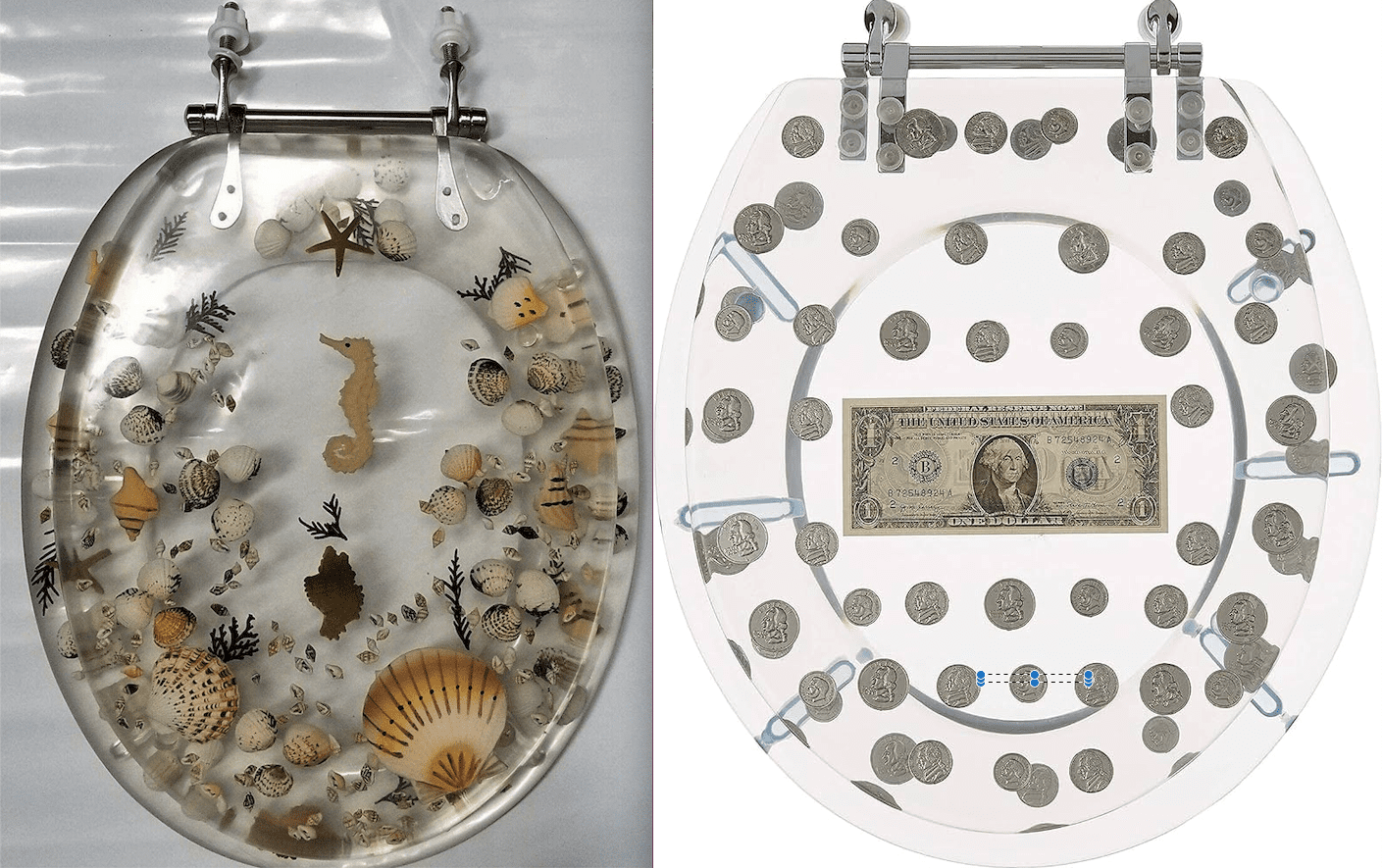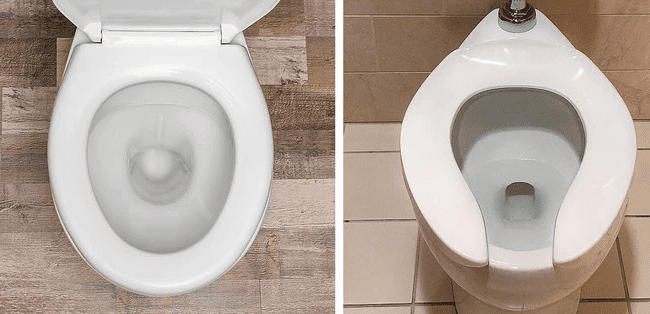Regardless of where you travel in the United States, when you gotta go, you gotta go. And you may have noticed in your travels that the toilet seat(s) in your home are typically not the same shape as what you’ll see in public toilets.
True, there may be some design differences in at-home toilet seats. They could be round or more oval-shaped. They might even be more rectangular than roundish. Some fancy toilet seats might be padded or heated or automatically open and close. They can be any color of the rainbow, or BE the color of the rainbow. They could even have seashells or money embedded in them.

(When I was a little kid, I SOOO wanted one of those seashell embedded toilets! I thought they were the COOLEST things, LOLOL!)
But with rare exceptions, the toilet seat(s) in public restrooms are U-shaped with an opening in the front (they’re also known as “open-front style”), while the one(s) in your home is/are closed (like an O). It doesn’t matter if it’s in the men’s or women’s rooms.
 Have you ever wondered why public toilets in the U.S. are like that? I did. So I decided to find out.
Have you ever wondered why public toilets in the U.S. are like that? I did. So I decided to find out.
So Why Are Public Toilet Seats U-Shaped?
It’s actually done on purpose, to be compliant with code.
There were no uniform codes for toilet systems in the early 1900s. Sewage and septic systems were made as the local code said to do them. Plumbers would fix things however they could, and depending on how the toilet system was made in the first place, there could be leaks in the line.
The Code Behind the Curve
Realizing that was a health and hygiene problem, the American Standard National Plumbing Code was created in 1955. That, in turn, was adapted to become the Uniform Plumbing Code by the International Association of Plumbing and Mechanical Officials (IAPMO) in 1973.
That code states, “Water closets shall be equipped with seats of smooth non-absorbent material. All seats of water closets provided for public use shall be of the open-front type.”
Fancy, huh?
But why?
It all comes down to hygiene.
It’s been determined that with an open front, there’s less surface area that can make inadvertent contact with your “junk” (“junk” = Men’s parts. Ladies’ parts. Anybody’s parts).
According to Lynne Simick, the Director of Code Development at IAPMO, the U-shape works particularly well for women. She’s been quoted as saying the gap in the seat is designed to “allow women to wipe the perineal area after using the toilet without contacting the seat.” Simick notes that the design also benefits men. She says an open-front seat “eliminates an area that could be contaminated with urine” as well as “eliminates the user’s genital contact with the seat.”
The code is just that – code. It’s not law. So you’ll occasionally see a public toilet that’s O-shaped. But the vast majority of them will be U-shaped, with an open-front style.
And now you know why.
Feature Image (adapted): Elyse Horvath / Wikimedia / CC BY-SA 2.0 DEED
Want to comment on this post? Great! Read this first to help ensure it gets approved.
Want to sponsor a post, write something for Your Mileage May Vary, or put ads on our site? Click here for more info.
Like this post? Please share it! We have plenty more just like it and would love it if you decided to hang around and sign up to get emailed notifications of when we post.
Whether you’ve read our articles before or this is the first time you’re stopping by, we’re really glad you’re here and hope you come back to visit again!
This post first appeared on Your Mileage May Vary

3 comments
You are always asking the question I didn’t know that I wanted to ask!
LOL….we try 😉
If you ever have a question you DID want to ask, email us at info@yourmileagemayvary.com – maybe we’ll turn it into a post!
More importantly why are the open! Low doors, half walls, it’s like the old Roman times! I laugh when I hear ppl arguing about gender bathrooms, we actually have communal ones! Gross and disgusting! Every country out there (almost) offer public toilets with some privacy! We can’t be the only country with weirdos!!